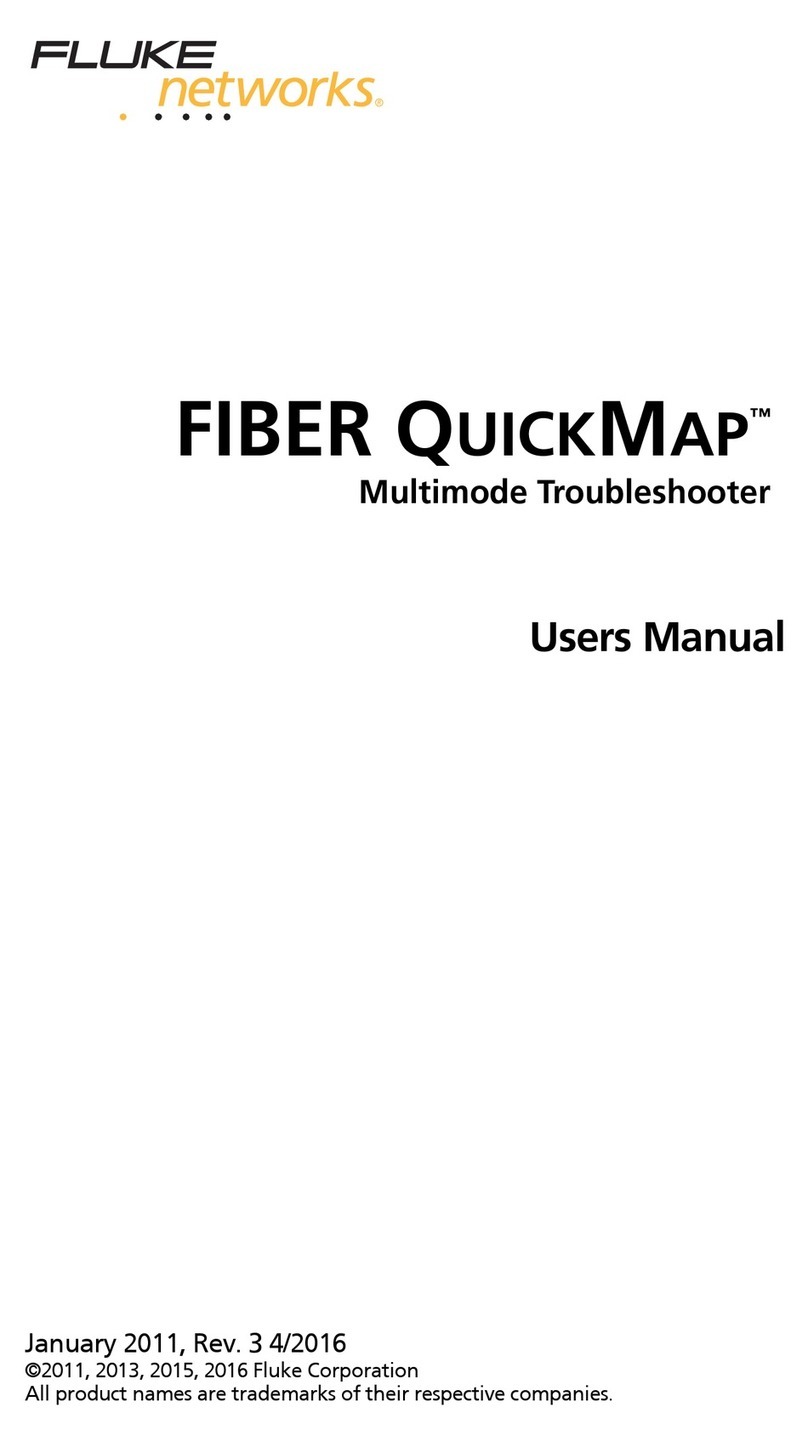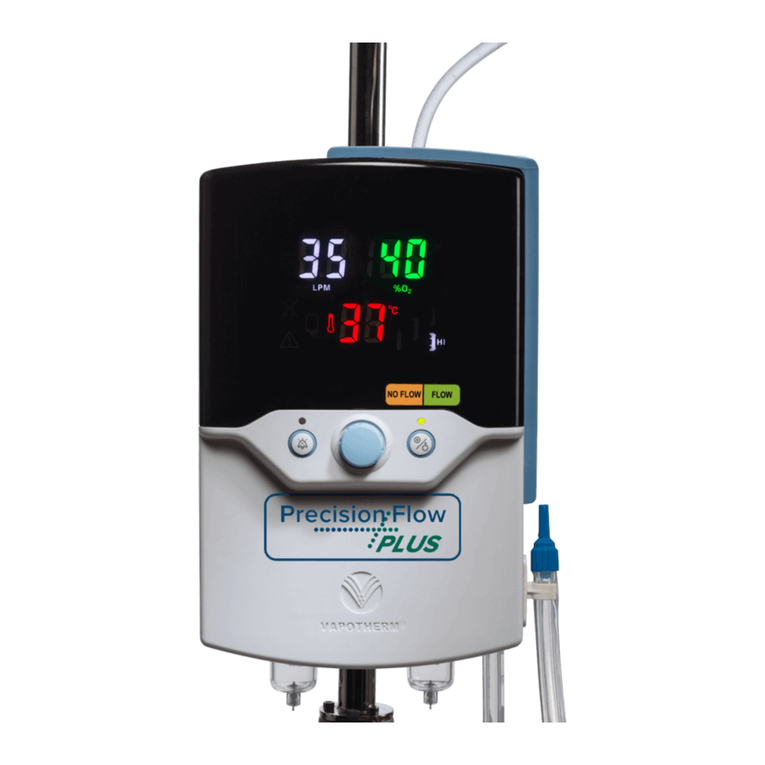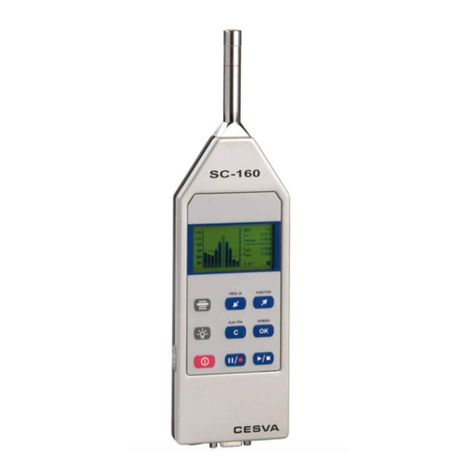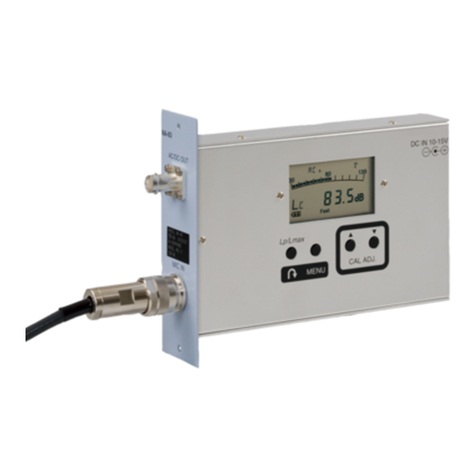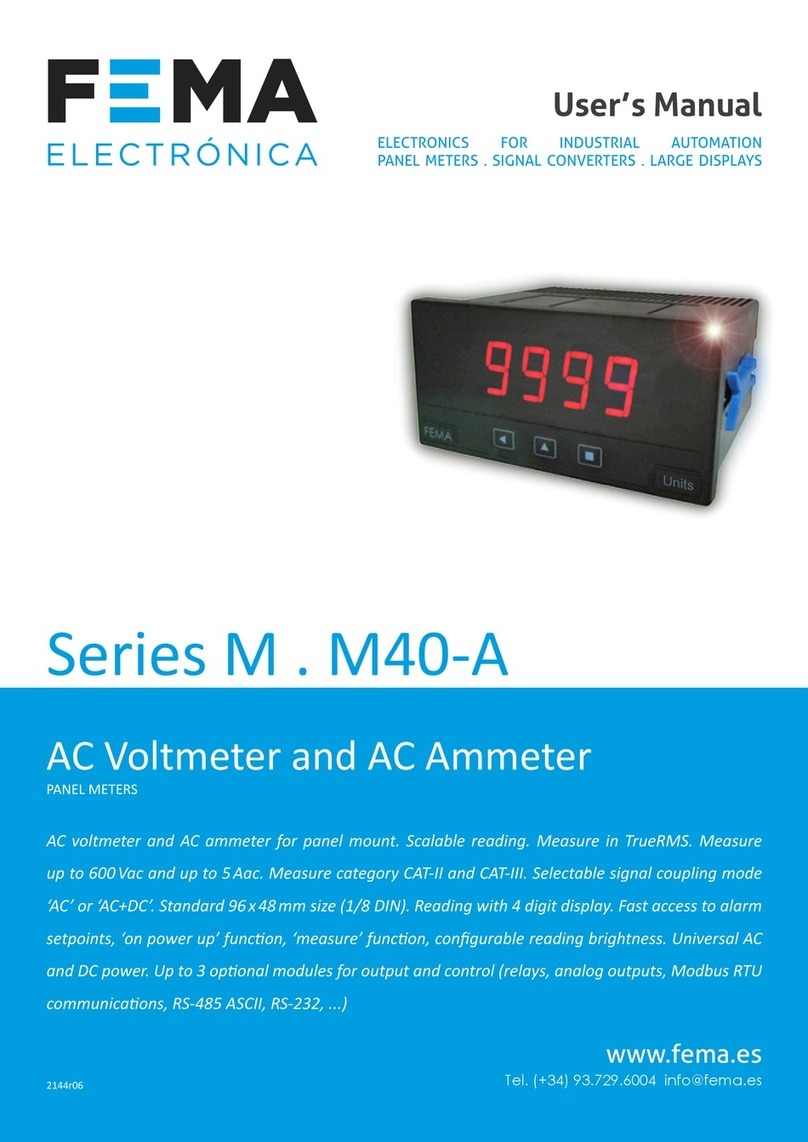General Technologies Corp CM100 User manual

1. SAFETY RULES
•This meter is designed for indoor use at temperatures between 0°C to 40°C and
altitudes up to 2,000m.
•To ensure that the meter is used safely, follow all safety and operating instructions in
this operation manual. If the meter is not used as described in this operation manual,
the safety features of this meter might be impaired.
•Do not use the meter if the meter or test leads look damaged ,or if you suspect that
the meter is not operating properly.
•When using the instrument, keep your fingers behind the finger guards on the plastic
casing and probes.
•Disconnect the live test lead before disconnecting the common test lead.
•Make sure power is off before cutting, desoldering, or breaking the circuit wires. Small
amounts of current can be dangerous.
•Do not apply more than 600 VDC or 600V AC rms between a terminal and ground.
•To avoid electrical shock, use CAUTION when working above 60V DC or 25V AC
rms. Such voltages pose a shock hazard.
•Never make measurements with the battery cover off.
•To avoid electrical shock or damage to the meter, do not exceed the input limits.
2. INTERNATIONAL SYMBOLS
Important information Dangerous Voltages
see manual Continuity
AC Ground
DC Double Insulation
3. TECHNICAL SPECIFICATIONS
3.1 General Specifications
Display: 4 digits LCD, 9999 counts and engineering units
annunciator display
Polarity: Automatic, (-) negative polarity indication
Zero adjustment: One touch button
Sample rate: 0.5 Sec.
Peak hold sample time: 10 mS for DCV and DCA
Over range indication: Only the “OL” is displayed
Power: 2x UM-4 or AAA 1.5 Volt battery
Auto power off: Automatically powers off after 30 min. of
no operation
Battery life: Approx. 50 hours. (w/ alkaline batteries)
Clamp opening size: 25 mm maximum.
Dimension: 202 x 70 x 34 mm.
Weight: Approx. 180 g. (Including battery)
Accesories: User’s Manual, Soft Carrying Pouch, Test Leads
and 2 x AAA Alkaline Batteries
3.2 Electrical Specifications
•The mark next to the probe tip, is a warning that the input voltage should
not exceed the indicated values. This is to prevent damage to the internal
circuitry.
•The function switches should be set to the function which you want to test
before operation.
•Accuracies are ±(% of reading + number of least significant digits) at 23°C
±5°C, less than 75% RH.
4. OPERATION
4.1 INSTRUMENT DESCRIPTION
1) Current sensing clamp
2) Safety protection ring
3) Clamp opening handle
4) LCD Display
5) COM input terminal
6) Positive input terminal
7) Zero button
8) Function selection knob
9) Peak/Data hold button
Function Range Resolution Accuracy Remarks Overload Protection
DC Current
10 A 1mA
±(2.5%+10) - 150 Arms
100 A 10 mA
AC Current
10 A 1 mA
±(2%+10) 50~500Hz 150 Arms
100A 10 mA
DC Voltage 600 V 0.1 V ±(1%+2) - 660 Vrms
AC Voltage 600 V 0.1 V ±(1.5%+5) 50~500Hz 660 Vrms
Resistance 100K10 ±(1%+3) - 660 Vrms
Continuity Beeps when < 1K3VDC Max. Test Voltage 660 Vrms
4.2 LCD Screen Description
600V CATII
300V CATIII 600A
H
HOLD
OFF
A
A
V
V
ZERO
P
H
A
600V CATII
300V CATIII
600V
COM
1
2
3
4
5
8
9
7
6
P
PEAK
Press
2 Sec
4.3 Current Measurement
CAUTION: Remove all test leads connected to the
instrument before proceeding with this test.
4.3.1 DC Current Measurement
• Set the function selector knob to (DCA).
• To minimize the influence of stray magnetic fields on the
measurement, position the clamp as close as possible to the wire
to be measured, with the same orientation that will be used for the
measurement.
• Press the “ZERO” button.
• The symbol will appear in the display.
• Open the clamp by pressing the clamp opening handle, insert the cable
or wire inside the current sensing clamp, and then close the clamp.
• Read the measured current on the LCD screen.
AUTO
P
H
A
V
Relative Indicator
AC/DC Indicator
Low Battery
Auto Power Off
Digital Reading Ohm Indicator
Voltage Indicator
Ampere Indicato
r
Continuity
Data Hold
Peak Hold
CM10 0
i
i

4.5.1 Resistance Measurement
Set the function selector knob to (Resistance). Insert the red test lead
into the positive input terminal (+), and the black test lead into the COM
terminal on the front of the instrument. Proceed to connect the test leads
across the component or circuit under test. Read resistance in Ohms on
the LCD screen
4.5.2 Continuity Test
Set the function selector knob to (Resistance). Insert the red test lead
into the positive input terminal (+), and the black test lead into the COM
terminal on the front of the instrument. Proceed to connect the test leads
tips across the component or circuit under test. If the resistance less is
than 100, the buzzer will emit a continuous tone.
4.6 Other Functions
4.6.1 Relative Measurements
By pressing the ZERO button, the instrument is entered into zero mode and
the indicator will appear on the LCD screen. The value in the display
immediately before pressing the button is stored into memory as a reference
value for future tests. To exit the Zero mode press the ZERO button again.
4.6.2 Data Hold and Peak Hold
Pressing the HOLD/PEAK button once, the present reading is held and
appears on the display. Press the switch again to return to normal mode
(continuous readings) and to release the data hold feature. The PEAK
HOLD function is enabled by pressing the HOLD/PEAK button until the
indicator appears on the screen. When in this mode, the instrument will
hold and display the highest reading obtained during the measurement.
To exit the peak/hold mode press the HOLD button for approx. 2 sec. until
the display indicator turns off. This function works with DCV, ACV, DCA
and ACA.
4.6.3 Auto Power Off
The meter will turn off automatically after approx. 30 minutes of no operation
to extend the battery life. Auto power off can be disabled by pressing
and holding down the ZERO button while turning on the instrument, when
auto power is off, the symbol on the screen will not appear. Auto power
off will be re-enable after turning off and on the instrument.
5. MAINTENANCE
CAUTION: Before attempting battery removal or
replacement, disconnect test leads and
remove the instrument from any energized
circuit to avoid shock hazard.
5.1 Battery Replacement
When the battery needs replacement, the battery symbol will be
appear in the upper left hand side of the LCD display. To replace the
battery, remove the screws at the back cover and replace with a 2 AAA
1.5 V alkaline batteries.
5.2 Cleaning
Periodically wipe the case with a soft damp cloth and mild household
cleanser. Do not use abrasives or solvents. Ensure that no water gets
inside the instrument to prevent possible shorts and damage.
6. WARRANTY
One year limited warranty, excluding batteries and fuses. For details
see Standard Warranty Information in our webpage or you may request
a printed copy.
4.3.2 AC Current Measurement
Set the function selector knob to (ACA). Open the clamp by pressing the
clamp opening handle, insert the cable or wire inside the current sensing
clamp, and then close the clamp and read from the LCD screen.
Battery
H
HOLD
OFF
A
A
V
V
ZERO
P
H
600V CATII
300V CATIII
600V
COM
P
PEAK
Press
2 Sec
V
+
-
600V CATII 100A
H
HOLD
OFF
A
A
V
V
ZERO
P
H
600V CATII
300V CATIII
600V
COM
P
PEAK
Press
2 Sec
Ω
600V CATII 100A
© Copyright 2019 General Technologies
General Technologies Corp.
#121 - 7350 72nd Street Tel.: (604) 952-6699
Delta, BC V4G 1H9 Fax: (604) 952-6690
Canada www.gtc.ca
Incorrect Correct
i
i
600VCATII 100A
H
H
HOLD
OFF
A
A
V
V
ZERO
P
H
A
600VCATII
300VCATIII
600V
COM
P
PEAK
Press
2 Sec
600VCATII 100A
H
HOLD
OFF
A
A
V
V
ZERO
P
H
A
600VCATII
300VCATIII
600V
COM
P
PEAK
Press
2 Sec
i
i
4.4 Voltage Measurement
CAUTION: Maximum Input Voltage is 600Vrms, do not
exceed this rating to avoid personal injuries or
damage to the instrument.
4.4.1 DC Voltage Measurement
Set the function selector knob to (DCV). Insert the red test lead into the
positive input terminal (+), and the black test lead into the COM terminal
on the front of the instrument. Proceed to connect the test leads across
the source or load under measurement. The polarity will be indicated when
the tip probe is connected. Read voltage on the display.
4.4.2 AC Voltage Measurement
Set the function selector knob to (ACV). Insert the red test lead into the
positive input terminal (+), and the black test lead into the COM terminal
on the front of the instrument. Proceed to connect the test leads across
the source or load under measurement. Read voltage on the LCD screen
4.5 Resistance and Continuity Measurement
CAUTION: Maximum Input Voltage is 600Vrms, do not
exceed this rating to avoid personal injuries
or damages to the instrument. Also ensure
there is no power applied to the circuit and
that all capacitors are discharged.
Table of contents
Popular Measuring Instrument manuals by other brands

Amprobe
Amprobe TIC 300 PRO user manual

GHM
GHM Delta OHM LPPYRA12 operating manual
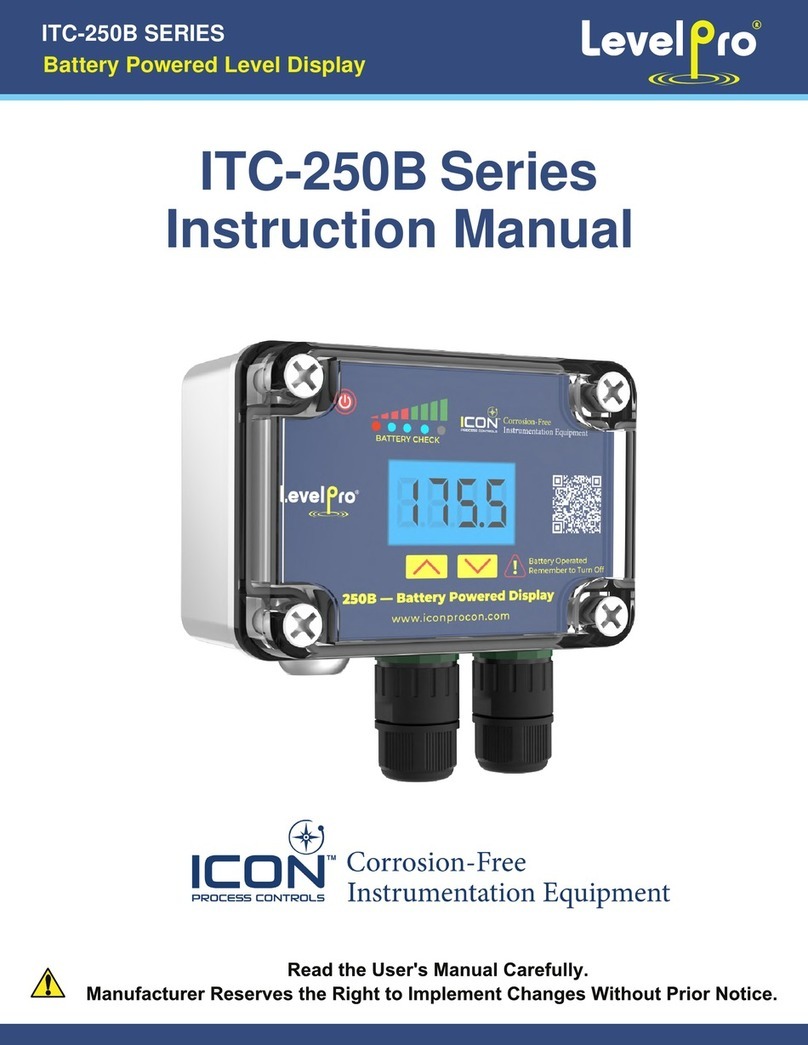
Level Pro
Level Pro ITC-250B Series instruction manual

Audio Precision
Audio Precision APx52 series installation instructions

Agilent Technologies
Agilent Technologies N6705 user guide

Bass
Bass EMD-RM Series Installation and instruction manual

